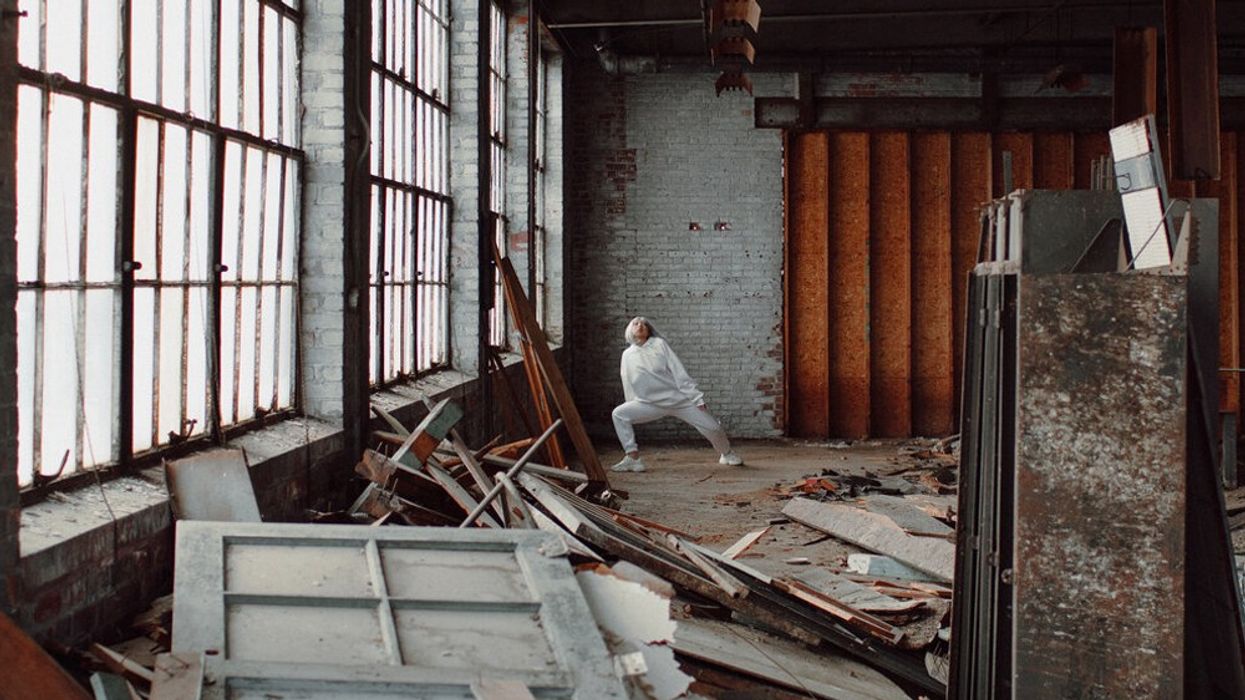Essential Tips for Creating an Indie Music Video with Social Distancing
Here's how you can shoot a micro-budget music video safely.

While online forums can be the wild west of the internet, some good things do come out of them. For instance, in 2017, I posted a short film on Reddit and was surprised when a very talented musician-composer Tucker Winstanley shot me an email. Since that initial introduction, we've collaborated on multiple projects.
When 2020 struck, like many of you, we were sidelined creatively by the pandemic. We communicated strictly electronically despite both living in NYC, and during that creative drought, we discussed doing a low-budget music video once it was safe to do so.
With New York slowly opening, this is what we learned shooting a micro-budget music video for Tucker Winstanley's song "Middling" while social distancing.
COVID-Friendly Concepts
Tucker and I agreed that COVID has been a terribly lonely, isolating time that left us starving for connection. We decided to try to marry that reality with the practical implications of a pandemic shoot and create a surreal video about a lonely ghost. The restrictive anxiety of the pandemic had given me a desire for free, unhinged expression and raw movement with an edge, so I embraced a documentary, handheld style of expressionistic visuals that juxtaposed other smooth, steady moments, creating a layered visual grammar to compliment Tucker’s lovely song.
I'm familiar with low-budget projects, but I hadn’t tried to shoot anything of my own during the pandemic. At first, I figured small productions would move faster than ones with larger crews. Fewer people would mean less exposure and more safety, right? Well, sure, but at a cost (more on that later).
The upside to working during a pandemic was that every single person on our set wanted to be there. Many of us had been working barely or not at all. We were dying to just get out there, make something beautiful, and do it safely.
I knew I wanted the video to bring viewers outside of COVID into a new world using a very small group of talent and a safe shooting environment. I thought of a talented dancer and friend Eliza Ohman. I’d been wanting to work with her for a while, but I never thought the circumstances would be during a pandemic. It turned out that not only did she want to dance and choreograph, but she also had a talented roommate, Jenna Ho, who was perfect for the lead role. Their expert friend Caleb Marshall was also interested in helping out.

Tucker was enthusiastic and supportive the entire time, giving us the remote thumbs-up as we approached production. The dancers started choreographing remotely, sending me iPhone clips of what they were working on, while Grace Merriman, our producer, started putting together our COVID safety strategy.
We chose free locations where we could shoot outdoors or indoors with tons of space and ventilation. Our cast and crew total was the absolute minimum—nine people. Our DP, Niko Feldman, made a camera package that required the least amount of crew possible. My wife Amy offered to be the COVID Compliance Officer and trained online via Screenskills—which we highly recommend someone doing on any size shoot. We also:
- Provided individually packaged PPE
- Stayed masked and socially distanced, with the exception of performers during each take
- Pre-sanitized the location
- Wore masks during group transportation to set
- Used paperless forms and documents as much as possible
- Wiped down high-touch surfaces and equipment frequently with disinfectant wipes
- Served individually packaged meals and snacks, ate lunch outside, and asked people to bring their own water canteens and coffee mugs
- Cut down our original shooting schedule from 3 days to 1¼ days

Complications occurred, as they always do, but with COVID pressure, we realized something that’s hard to accept in a world of convenience: it was possible, even likely, that we would get to the day of the shoot and someone wouldn’t be able to come, someone would get exposed, something would fall through. Grace and I talked through all "what-if" scenarios at length.
We knew no project is worth risking anyone’s health and had to accept the possibility of total failure—if someone bailed last minute, we’d accept that. If someone got a positive test, we’d replace them or shut down the shoot.
Understanding those risks and being prepared for them allowed us to safely move forward with the production. You have to recognize, outline, and plan for any potential risk in pre-production.
That's key to staying creative and being safe.
Check out more of my work over on my website or follow me on Instagram.











